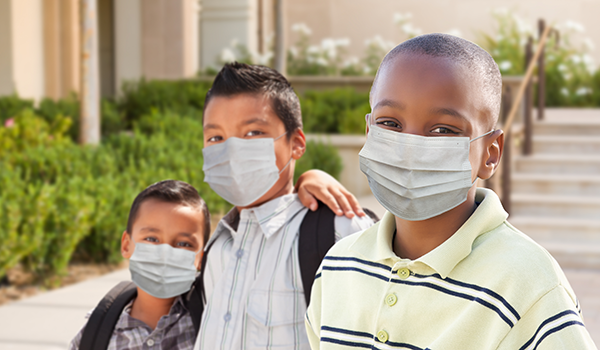Researchers Use Cutting-Edge EHR Data Resource to Find Risk Factors for Severe COVID-19 in Children

(Andy Dean Photography/Shutterstock)
May 11, 2022
Children with COVID-19 often get less sick than adults, but some are at risk for serious illness or even death. In a recent study published in the journal JAMA Network Open, NCATS-supported researchers found traits that put children more at risk for severe COVID-19 complications. These traits can help doctors decide whether children diagnosed with COVID-19 should receive different treatment to avoid hospitalization.
Using data from NCATS’ National COVID Cohort Collaborative (N3C) Data Enclave, researchers studied records from more than 1 million patients ages 18 and younger who were tested for SARS-CoV-2, the virus that causes COVID-19, between March 2020 and September 2021. About 167,000 of these children tested positive for the virus. Of the children who tested positive, 10,000 were admitted to the hospital. The 1,400 children whose diseases were most severe shared many characteristics. Children who were male, Black/African American, obese, or diagnosed with certain pediatric chronic conditions were more likely to have severe COVID-19.
Some children with COVID-19 develop a dangerous condition called multisystem inflammatory syndrome in children (MIS-C), in which some organs become inflamed. Only about 700 out of the 10,000 children hospitalized in the study developed MIS-C. Children who were male, Black/African American, or obese were more likely to develop MIS-C. Children who developed MIS-C also were likely to be younger than 12 years and to have no previous chronic illnesses.
The JAMA Network Open study does not include information about children infected with the Omicron variant of SARS-CoV-2. However, the N3C is primed to deliver answers as the pandemic evolves. A subsequent brief report published online in JAMA Pediatrics used N3C data to analyze a unique presentation of COVID-19 in children infected by Omicron: upper airway infection. Researchers found that SARS-CoV-2–positive upper airway infections increased in kids during the Omicron surge.
“The Omicron variant tends to infect the upper airway, including the trachea or windpipe, more than earlier variants,” said Tellen Bennett, M.D., M.S., of the University of Colorado School of Medicine and Children’s Hospital Colorado, who was senior author of both studies. “Young children have small airways and are more vulnerable to upper airway infection in general. These infections may be known as croup or tracheitis.”
The N3C is a state-of-the-art national COVID-19 data resource that unlocks the potential within millions of patient health records to speed medical research and identify treatments. Hospitals and health care plans across the country contribute de-identified clinical data to the secure, cloud-based N3C Data Enclave, which is the largest open U.S. source of data from patient electronic health records. Information about pediatric cases of COVID-19 is available through the N3C pediatrics dashboard.
Read the JAMA Network Open article and the JAMA Pediatrics article, and visit NCATS’ website to learn more about the N3C.


